Longtail Stingray, Hypanus longa
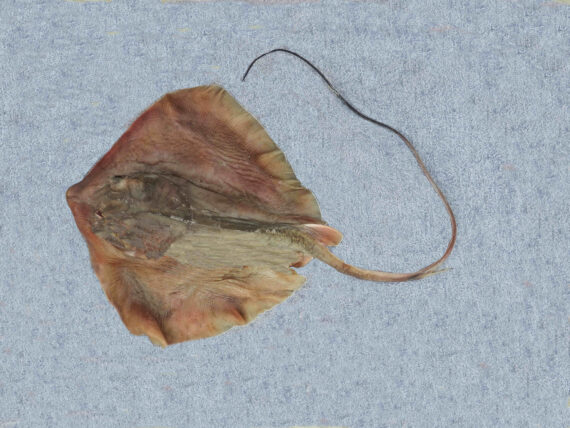
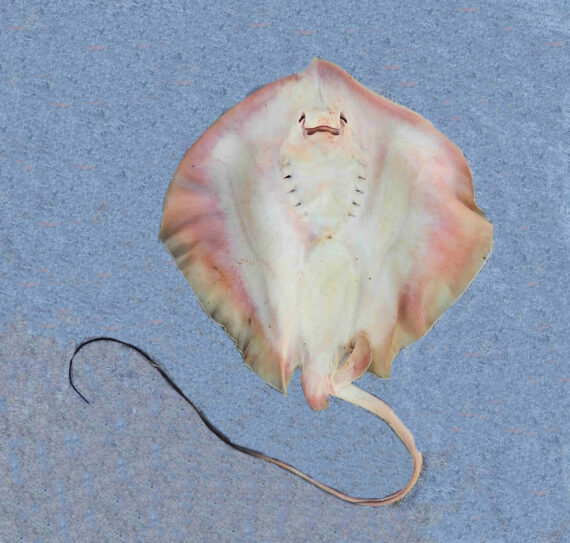 Longtail Stingray, Hypanus longa. Fish provided by the commercial fishermen of the greater Los Cabos area, Baja California Sur, December 2009. Disc size: 26 cm (10 inches) x 24 cm (9.5 inches). Tail length: 48 cm (19 inches).
Longtail Stingray, Hypanus longa. Fish provided by the commercial fishermen of the greater Los Cabos area, Baja California Sur, December 2009. Disc size: 26 cm (10 inches) x 24 cm (9.5 inches). Tail length: 48 cm (19 inches).
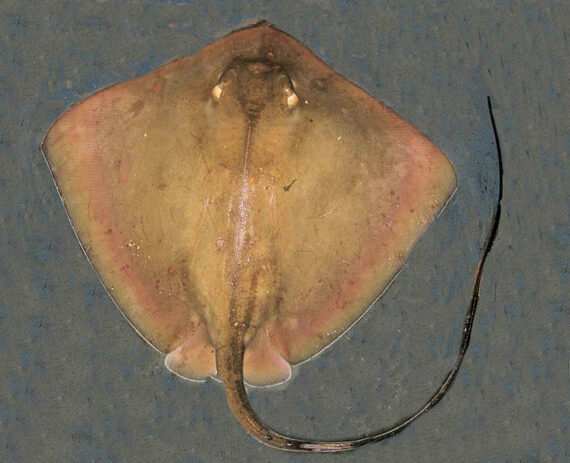 Longtail Stingray, Hypanus longa. Fish provided by the commercial fishermen of Bahía Kino, Sonora, March 2015. Disc size: 33 cm (13 inches) x 38 cm (15 inches). Tail length: 58 cm (23 inches). Photograph and identification courtesy of Maria Johnson, Prescott College Kino Bay Center, Kino Bay, Sonora.
Longtail Stingray, Hypanus longa. Fish provided by the commercial fishermen of Bahía Kino, Sonora, March 2015. Disc size: 33 cm (13 inches) x 38 cm (15 inches). Tail length: 58 cm (23 inches). Photograph and identification courtesy of Maria Johnson, Prescott College Kino Bay Center, Kino Bay, Sonora.
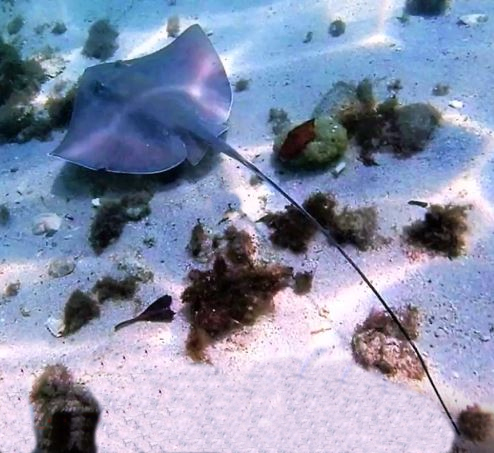 Longtail Stingray, Hypanus longa. Underwater photograph taken in Zihuantanejo Bay, Guerrero, March 2018. Photograph courtesy of Ron Woheau, Zihuantanejo.
Longtail Stingray, Hypanus longa. Underwater photograph taken in Zihuantanejo Bay, Guerrero, March 2018. Photograph courtesy of Ron Woheau, Zihuantanejo.
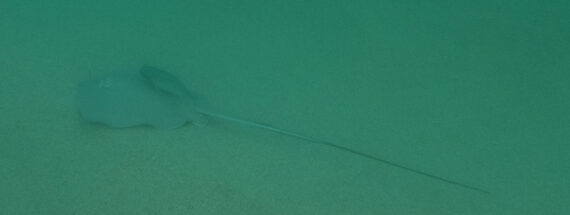 Longtail Stingray, Hypanus longa. Underwater photograph taken with coastal waters within Parque National Huatulco, Huatulco, Oaxaca, March 2021. Photograph courtesy of Marina Sutormina, Stockholm, Sweden.
Longtail Stingray, Hypanus longa. Underwater photograph taken with coastal waters within Parque National Huatulco, Huatulco, Oaxaca, March 2021. Photograph courtesy of Marina Sutormina, Stockholm, Sweden.
The Longtail Stingray, Hypanus longa, is a member of the Whiptail Stringray or Dasyatidae Family, that is known in Mexico as raya látigo largo. This fish has very recently been reclassified from Dasyatis longa. Globally, there are thirty-eight species in the genus Hypanus, of which five are found in Mexican waters, three in the Atlantic and two in the Pacific Ocean.
The Longtail Stingray has a rhomboid or diamond shaped discs that are slightly wider than they are long. They have a maximum total length of 2.6 meters (8 feet 5 inches) and disc width of 1.58 meters (5 feet 2 inches), and 46.4 kg (102 lbs) in weight. They are uniformly dark brown dorsally and off-white ventrally. Their disc has flattened pectoral fins that are continuous and extend from their head to their tail base with broadly rounded outer corners and straight front margins. Their head has a blunt non-projecting snout, large eyes immediately followed by spiracles on their dorsal side, and a strong curved mouth equipped with numerous rows of small blunt teeth on their ventral side. Their pelvic fins are rounded. Mature fish have a central row of blunt thorns that extend from their head to their shoulders, two additional thorns much further back, one or two thorns on each shoulder, and numerous dermal denticles behind their stinging spine; these thorns are absent in juveniles. They have a long slender whip-like tail that is approximately twice the length of their disc and one venomous serrated tail spine that is closer to the base than the tip and is potentially dangerous. Their tail becomes laterally compressed with a low keel above and a short narrow fin fold below.
The Longtail Stringray is a rare deep water species found within soft and sandy bottoms and within coral and rocky reefs on the continental shelf and in estuaries at depths up to 90 m (300 feet). They spend the majority of their time in deeper waters but females migrate to shallow waters in the spring to deliver their offspring. They are a dimorphic species with females being larger than males. Sexually mature males have disc widths of at least 82 cm (2 feet 9 inches) while sexually mature females have disc widths greater than 1.1 meters (3 feet 7 inches). They are solitary in nature. They feed on decapods, molluscs, stomatopods, and bony fish. Reproduction occurs via aplacental viviparity with internal fertilization. Embryos are sustained by a yolk sac for an undetermined period of time after which they are nourished by uterine milk secreted by their mother. After a gestation period of 10 to 11 months one to five miniature adults are born that have disc widths of approximately 40 cm (16 inches). Several bays with shallow estuaries and tidal creeks along the Pacific coast of Baja California are known to serve as nurseries. The Longtail Stingray The Acapulco Damselfish is poorly studied with very limited information available about their lifestyle and behavioral patterns including specific details on age, growth, longevity, movement patterns, diet, habitat use, and reproduction.
The Longtail Stingray is a resident of Mexican waters of the Pacific Ocean but has a limited distribution being found from Magdalena Bay, Baja California Sur, southward along the southwest coast of Baja, in the lower half of the Sea of Cortez, and along the coast of the mainland south to Guatemala.
The Longtail Stringray is most likely and easily confused with the Diamond Stingray, Hypanus dipterura (tail one and a half disc length; upper fin fold). However, the tails in both species are often damaged making their differentiation in the field exceedingly difficult.
From a conservation perspective the Longtail Stingray is currently considered to be Data Deficient. Elasmobranch landing in Mexico are poorly monitored and lack species specific details. Regulations were put in effect in Mexico in 1993 but have not been monitored. Currently they lack any form of management and catch levels with specific details. I believe they will soon be reclassified as Near Threatened as females give birth in shallow waters, they are subject to heavy fishing pressure at certain times of the year, they have slow growth rates, long reproduction cycles with low productivity, and there is on-going habitat destruction of coastal bays and mangrove lagoons within their nursery areas. The Longtail Stingrays are a minor species of the artisanal elasmobranch fishery along the Pacific coast of Mexico and the Gulf of California. The majority are caught by demersal gill nets, longlines or traps with most fish being immature juveniles. When available, they are considered an important food source for local people and sold on a limited basis dried and salted. They have a venomous tail spine that can inflict very painful wounds in humans but these are not life threatening.